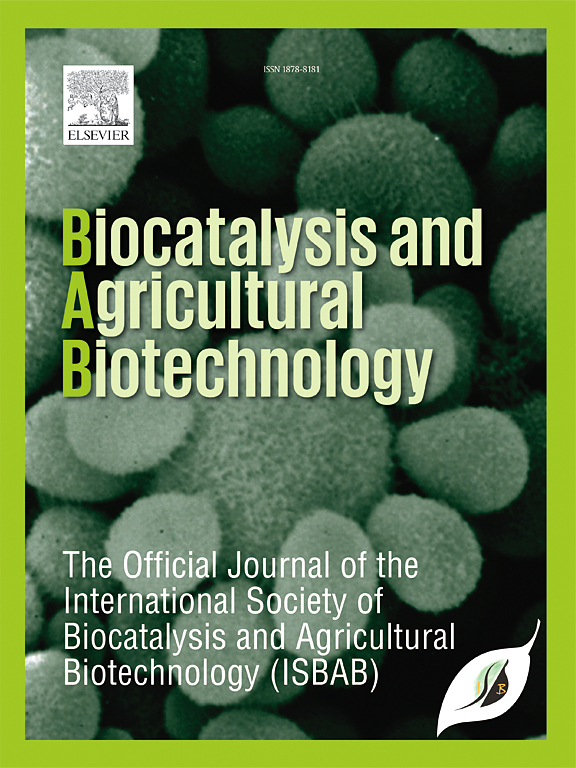Insight into the potential of a novel activated carbon from rumen waste and its green application in tartrazine dye removal from effluents
IF 3.4
Q2 BIOTECHNOLOGY & APPLIED MICROBIOLOGY
引用次数: 0
Abstract
This study aimed to use bovine rumen waste as a precursor for the synthesis of activated carbon, as well as to apply the produced carbon in effluent treatment for the removal of tartrazine dye. The bovine rumen waste exhibited suitable characteristics as a carbon precursor, including a high lignocellulosic content, and can be used to synthesize activated carbon. Phosphoric acid was used for chemical activation (105 °C for 24 h at a 1:1 ratio), and functional groups were effectively incorporated onto the adsorbent surface, resulting in acidic carbon. At a pH of 3, the adsorbent showed high efficiency in removing tartrazine dye, with the adsorption capacity influenced by temperature (111.90 mg.L−1 at 318.15 K). The best-fitting isotherm model was Freundlich, and the adsorption was found to be endothermic, thermodynamically favorable at all studied temperatures. Therefore, activated carbon from bovine rumen waste has the potential to be a sustainable and low-cost adsorbent for removing dyes from industrial effluents.

一种新型瘤胃废物活性炭的潜力及其在废水中柠檬黄染料去除中的绿色应用
本研究旨在利用牛瘤胃废物作为合成活性炭的前体,并将所生产的活性炭应用于废水处理中去除酒黄石染料。牛瘤胃粪便具有较高的木质纤维素含量,适合作为碳前体,可用于合成活性炭。用磷酸进行化学活化(105℃,1:1比例,24 h),官能团有效结合到吸附剂表面,生成酸性碳。在pH = 3的条件下,吸附剂对酒黄染料的吸附效果良好,吸附量受温度的影响(111.90 mg)。L−1 (318.15 K))。等温线模型是Freundlich模型,在所有研究温度下,吸附都是吸热的,热力学有利。因此,从牛瘤胃粪便中提取的活性炭有潜力成为一种可持续的低成本吸附剂,用于去除工业废水中的染料。
本文章由计算机程序翻译,如有差异,请以英文原文为准。
求助全文
约1分钟内获得全文
求助全文
来源期刊

Biocatalysis and agricultural biotechnology
Agricultural and Biological Sciences-Agronomy and Crop Science
CiteScore
7.70
自引率
2.50%
发文量
308
审稿时长
48 days
期刊介绍:
Biocatalysis and Agricultural Biotechnology is the official journal of the International Society of Biocatalysis and Agricultural Biotechnology (ISBAB). The journal publishes high quality articles especially in the science and technology of biocatalysis, bioprocesses, agricultural biotechnology, biomedical biotechnology, and, if appropriate, from other related areas of biotechnology. The journal will publish peer-reviewed basic and applied research papers, authoritative reviews, and feature articles. The scope of the journal encompasses the research, industrial, and commercial aspects of biotechnology, including the areas of: biocatalysis; bioprocesses; food and agriculture; genetic engineering; molecular biology; healthcare and pharmaceuticals; biofuels; genomics; nanotechnology; environment and biodiversity; and bioremediation.
 求助内容:
求助内容: 应助结果提醒方式:
应助结果提醒方式:


